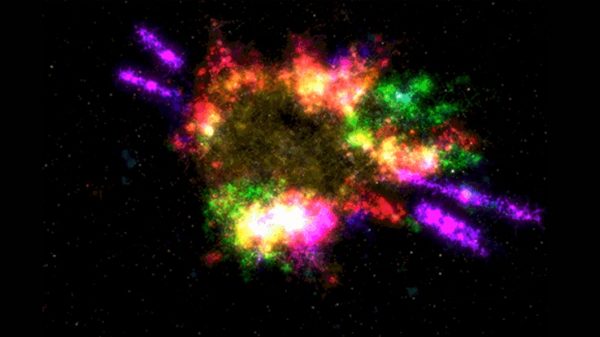
When the universe’s largest stars run out of fuel and die, they explode in technicolor tsunamis of gas and dust that can stretch on into space for dozens of light-years. To see the full array of cosmic colors left behind by a star gone supernova, you generally need some pretty sophisticated telescopes capable of seeing light beyond the visible spectrum. But today, you can grab a front-row seat to those cosmic pyrotechnics by clicking over to this new 3D simulation released by the Smithsonian.
The interactive, 360-degree graphic allows armchair astronauts to navigate through the heart of a supernova remnant using just their mouse and arrow keys. The simulation shows the likeness of an actual supernova site called Cassiopeia A, a 10-light-year-wide cloud of stellar debris located in the Milky Way’s Cassiopeia constellation (about 11,000 light-years from Earth). The supernova’s colorful likeness was re-created using actual observations measured in gamma ray, infrared, ultraviolet, X-ray and radio wavelengths, provided by half a dozen observatories around the United States.
With all these elusive light sources laid on top of one another, the resulting image is a rainbow collage of green iron, yellow silicon, red argon and magenta neon gas clouds crisscrossed by purple jets of scorching-hot matter streaking out of the debris. At the center of this gassy mosaic is the ominous image of a neutron star — the ultradense, ultrasmall core of the collapsed giant star responsible for the supernova debris in the first place.


